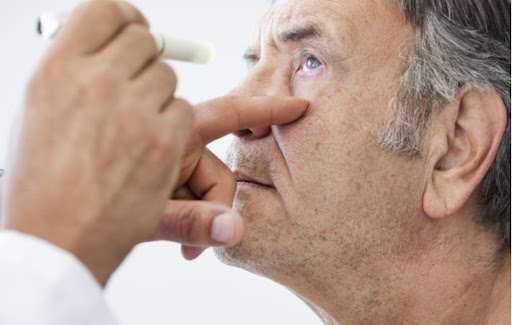If you know what glaucoma is, you’ve likely heard about its open and angle-closure variations. While both are serious conditions, one is a medical emergency, requiring a timely visit to your optometrist.
Glaucoma can cause significant damage to your eyes, and understanding this condition can protect your vision. What’s the difference between open-angle and angle-closure glaucoma?
Continue reading to learn more about glaucoma, including the differences between its two most common forms.
What is Glaucoma?
Glaucoma is a group of eye conditions that damage the optic nerve. It’s one of the leading causes of blindness in people over 60, but glaucoma can develop at any age. Some people may be more at risk of glaucoma than others.
There are several variations of this condition, with many of them increasing the pressure inside the eye, causing damage.
If left untreated, glaucoma will cause blindness. Unfortunately, this condition may not present any symptoms until vision loss begins. This vision loss is unrecoverable, so regular eye exams are crucial for catching any early signs of glaucoma development.
If your optometrist diagnoses glaucoma early, treatments can help slow or prevent vision loss. This condition may progress slowly or quickly, depending on the type of glaucoma. Some of the most common forms of this condition include:
Open-Angle Glaucoma
Open-angle glaucoma accounts for around 90% of glaucoma cases. It develops slowly, presenting few symptoms until later stages.
Common symptoms of open-angle glaucoma include:
- Tunnel vision (in advanced stages)
- Patchy blind spots in your peripheral & central vision
Open-angle glaucoma generally occurs due to issues with fluid drainage in the eye. There is an angle where the cornea and iris meet, holding a drainage system. It filters fluid and drains it from your eye.
With other forms of glaucoma, complications can close this angle so fluid can’t properly drain. Open-angle glaucoma doesn’t have this issue (hence its name); the drainage angle is wide and open.
When you have open-angle glaucoma, the problem lies further in the drainage system. Your eye may be producing too much fluid, or you may have a clog somewhere. Both of these issues cause fluid to drain more slowly, raising the pressure in the eye.
Angle-Closure Glaucoma
Angle-closure glaucoma is less common but a more immediately serious condition. It’s a medical emergency, requiring treatment as soon as possible.
This form of glaucoma develops quickly, presenting several symptoms, including:
- Nausea
- Intense eye pain
- Blurred vision
- Red eyes
If you experience any of these signs, visit your eye doctor or an emergency room right away. Untreated angle-closure glaucoma can quickly lead to blindness.
The drainage angle in the eye is blocked when someone has angle-closure glaucoma. When this angle can’t let fluid pass, pressure can suddenly increase, leading to eventual blindness.
If the pressure builds, your doctor typically uses laser treatment and medicine to help fluid drain effectively. Pressure will drop when fluid drains, protecting your vision. Angle-closure glaucoma isn’t always sudden; it can be chronic, building up fluid over time.
Both types of glaucoma increase the pressure in your eyes, caused by fluid ineffectively draining. With many similarities, what’s the difference between open-angle and angle-closure glaucoma?

Open-Angle vs. Angle-Closure Glaucoma: What’s the Difference?
Glaucoma can be confusing to understand because there are so many variations of the disease. With open-angle and angle-closure glaucoma, they have differences that seem minimal, but they require different treatments. While both are serious conditions, angle-closure glaucoma is more immediately concerning.
There are a few main differences between these two types of glaucoma:
- Their cause
- The drainage angle
- Their development rate
- Their severity
Open-Angle Glaucoma
Open-angle glaucoma is a lifelong condition. While not immediately concerning, it does require treatment to slow vision loss.
This condition progresses slowly, making identifying symptoms and damage difficult. The main difference between these two conditions is the state of the drainage angle.
Open-angle glaucoma has an open and wide drainage angle. The problem typically lies further in the drainage system.
Angle-Closure Glaucoma
Angle-closure glaucoma can rapidly develop. It can lead to blindness quickly, so it requires immediate medical attention. Because of its development rate, symptoms and damage are easily noticeable.
Unlike open-angle glaucoma, a blocked drainage angle causes this condition. The blocked drainage canals lead to a sudden increase in eye pressure.
No matter what glaucoma you may have, you should visit your optometrist if you experience any relevant symptoms. They can diagnose any problems and help you manage your condition.
Regular Eye Exams Can Protect Your Eyes
Glaucoma can cause irreversible damage to your vision, and you may not notice symptoms. Regular eye exams can help identify any problems you may be having, including glaucoma. Your optometrist can conduct several tests to check for signs of disease. If you’re experiencing symptoms of glaucoma or need an eye exam, book an appointment. Your optometrist is here to help.







